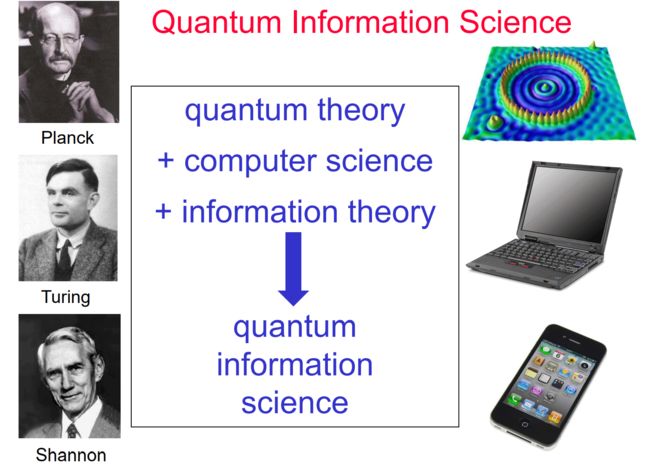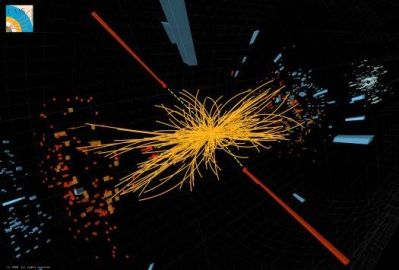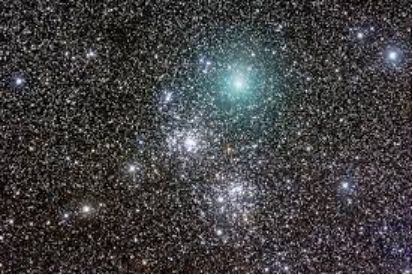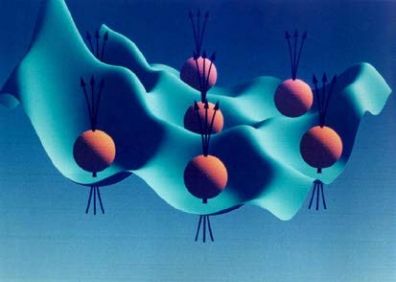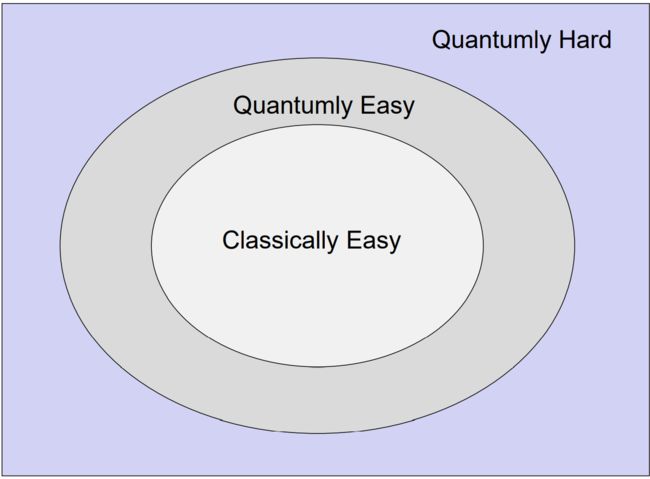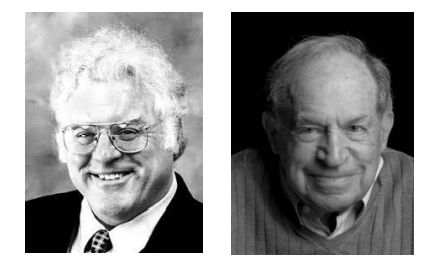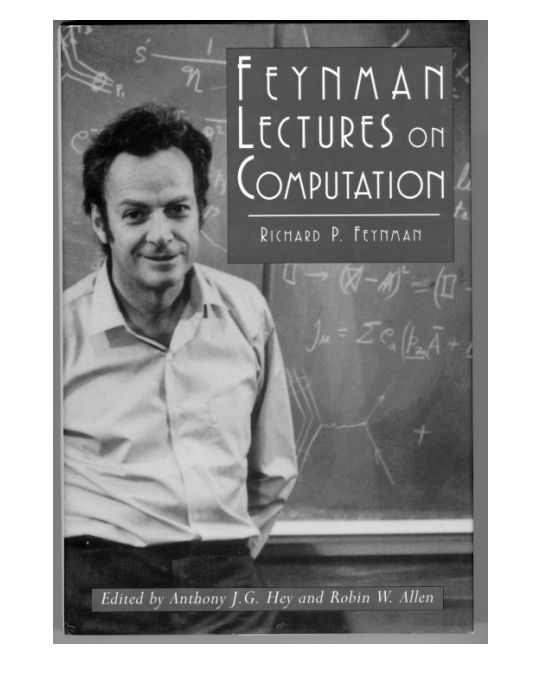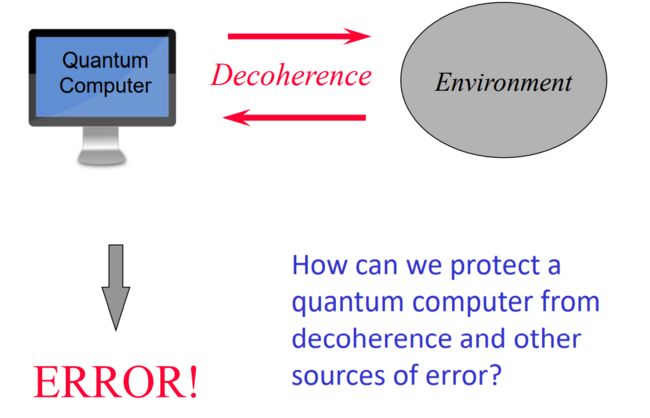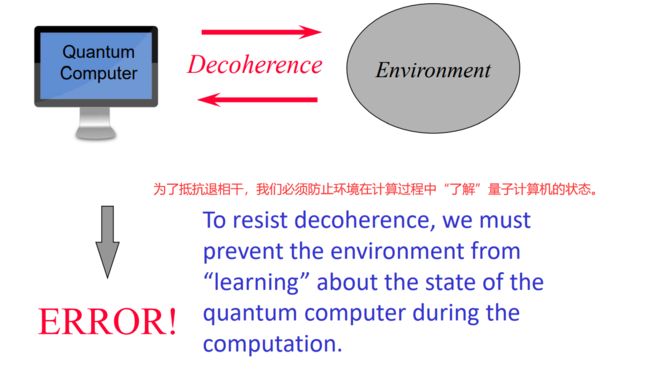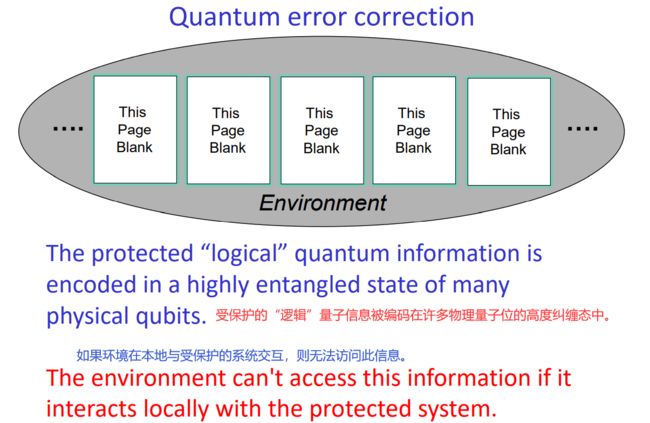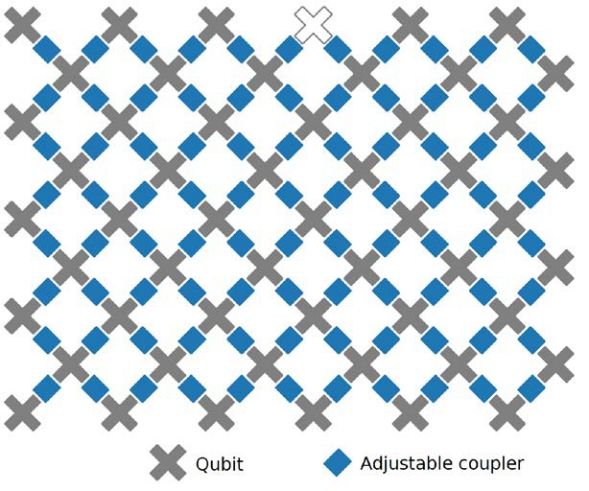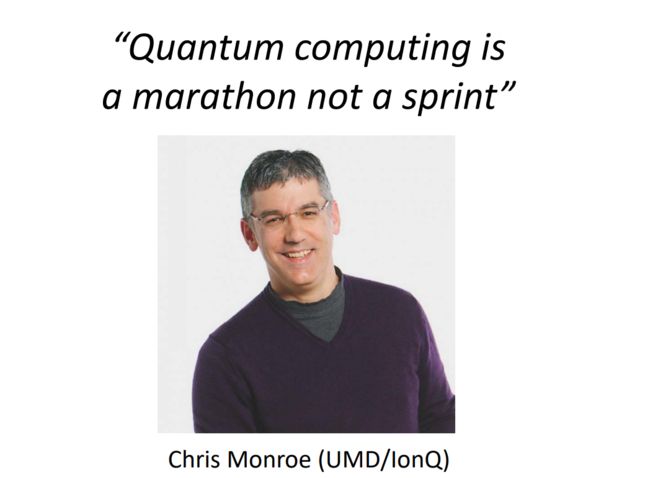量子计算1-Introduction
量子信息科学由:量子理论+计算机科学+信息论三部分组成
Quantum Information Science
Quantum sensing
Improving sensitivity and spatial resolution.
提高灵敏度和空间分辨率。
Quantum cryptography
Privacy founded on fundamental laws of quantum physics.
使用量子态的通信,一旦有人窃听就会被感知到,它提供了一种不可被破解的加密。
Quantum networking
Distributing quantumness around the world.
量子网络建立在纠缠和量子测量的基础上,以完成经典系统无法完成的任务。利用量子效应,我们可以检测窃听者的存在,提高望远镜等科学仪器的灵敏度,或者将量子数据从一个位置传送到另一个位置。与传统系统相比,远程纠缠可以在更少的通信周期内执行重要任务,如拜占庭协议和领导人选举,从而提高分布式系统中至关重要的操作效率。
Quantum simulation
Probes of exotic quantum many-body phenomena.
众所周知,模拟量子力学是一个困难的计算问题,尤其是在处理大型系统时。然而,这个困难可以通过使用一些可控的量子系统来研究另一个不那么可控或可访问的量子系统来克服,即量子模拟。量子模拟有望在凝聚态物理、高能物理、原子物理、量子化学和宇宙学等许多问题的研究中得到应用。量子模拟可以使用量子计算机来实现,但也可以使用更简单的模拟设备,这些设备需要更少的控制,因此更容易构建。许多量子系统,如中性原子、离子、极性分子、半导体中的电子、超导电路、核自旋和光子,已经被提出作为量子模拟器。本文概述了量子模拟的主要理论和实验方面,并强调了这一快速发展领域的一些挑战和前景。
Quantum computing
Speeding up solutions to hard problems.
加快解决棘手问题的速度。量子计算意味着使用新型的计算机。是量子物理学必不可少的解决方法,因为使用普通的计算设备很难解决
Quantum information concepts
Entanglement, error correction, complexity, …
纠缠,纠错,复杂
Frontiers of Physics(物理前沿)
Two fundamental ideas
- Quantum complexity(量子复杂性)
Why we think quantum computing is powerful.(为什么我们认为量子计算很强大)
- Quantum error correction(量子纠错)
Why we think quantum computing is scalable.(为什么我们认为量子计算是可伸缩的)
Quantum entanglement(量子纠缠)
Nearly all the information in a typical entangled “quantum book” is encoded in the correlations among the “pages”.You can’t access the information if you read the book one page at a time. (在一本典型的纠缠“量子书”中,几乎所有的信息都被编码在“页面”之间的关联中。如果你一页一页地阅读这本书,你就无法获取信息。)
A complete description of a typical quantum state of just 300 qubits requires more bits than the number of atoms in the visible universe.(一个只有300个量子位的典型量子态的完整描述需要的原子数比可见宇宙中原子的数量更多)
Why we think quantum computing is powerful
(为什么我们认为量子计算很强大)
- Problems believed to be hard classically, which are easy for quantum computers. Factoring is the best known example.
经典上被认为是困难的问题,对于量子计算机来说很容易。因式分解是最著名的例子。
-
Complexity theory arguments indicating that quantum computers are hard to simulate classically.
复杂性理论表明量子计算机很难进行经典模拟。(量子计算机无法有效地解决精确问题)
-
We don’t know how to simulate a quantum computer efficiently using a digital (“classical”) computer. The cost of the best known simulation algorithm rises exponentially with the number of qubits.
我们不知道如何使用数字(“经典”)计算机有效地模拟量子计算机。最著名的模拟算法的成本随着量子比特的数量呈指数增长。
But … the power of quantum computing is limited. For example, we don’t believe that quantum computers can efficiently solve worst-case instances of NP-hard optimization problems (e.g., the traveling salesman problem).
但是…量子计算的能力是有限的。例如,我们不相信量子计算机能有效地解决NP难优化的最坏情况问题(例如,旅行推销员问题)。
Problems
“The theory of everything?”
A quantum computer can simulate efficiently any physical process that occurs in Nature.
(Maybe. We don’t actually know for sure.)
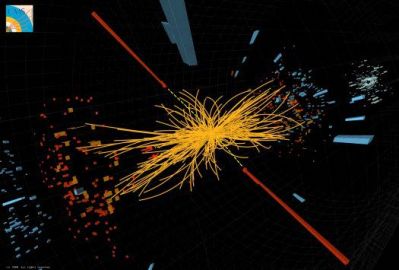 |
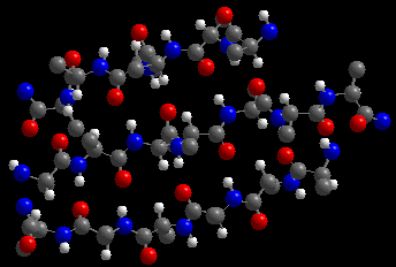 |
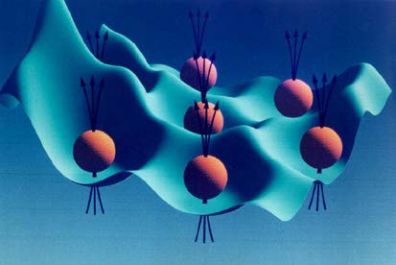 |
|---|---|---|
| particle collision(粒子碰撞) | molecular chemistry(分子化学) | entangled electrons(纠缠电子) |
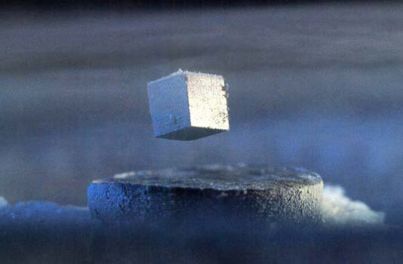 |
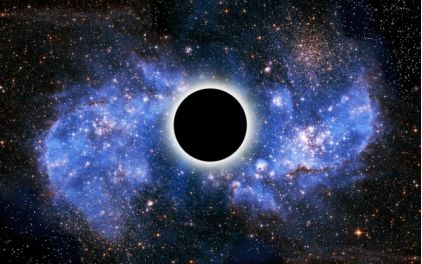 |
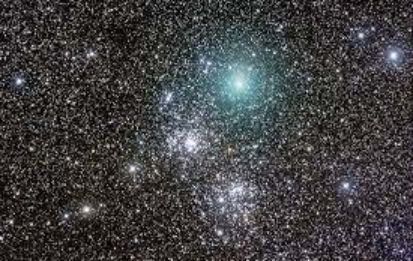 |
| superconductor(超导体) | black hole(黑洞) | early universe(早期宇宙) |
Understanding strongly interacting quantum systems will be like the transition from alchemy to chemistry(理解强相互作用的量子系统就像是从炼金术到化学的过渡)
Why quantum computing is hard
-
We want qubits to interact strongly with one another.(我们希望量子位元彼此之间有强烈的相互作用)
-
We don’t want qubits to interact with the environment.(我们不希望量子比特与环境相互作用)
-
Except when we control or measure them. (除非当我们控制或测量它们)
[外链图片转存失败,源站可能有防盗链机制,建议将图片保存下来直接上传(img-SNsuLh62-1644468172964)(http://qiniuyuntypora.liuwenbo.top/img/@DF6{(UW(KJU)]RDFOV00@`P.png)
Decoherence explains why quantum phenomena, though observable in the microscopic systems studied in the physics lab, are not manifest in the macroscopic physical systems that we encounter in our ordinary experience.(退相干解释了为什么量子现象,虽然在物理实验室研究的微观系统中可以观察到,但在我们日常经验中遇到的宏观物理系统中却没有表现出来)
量子相干性 先介绍一下“量子相干性”。
现在各国科学家都在努力希望实现量子计算机,而量子计算机需要一些重要的量子性质。
其一是“量子相干性”。
量子相干性,或者说“态之间的关联性”。
其其一是爱因斯坦和其合作者在1935年根据假想实验作出的一个预言。
这个假想实验时这样的:高能加速器中,由能量生成的一个电子和一个正电子朝着相反的方向飞行,在没有人观测时,两者都处于向右和向左自旋的叠加态而进行观测时,如果观测到电子处于向右自旋的状态,那么正电子就一定处于向左自旋的状态。
这是因为,正电子和电子本是通过能量无中生有而来,必须遵守守恒定律。
这也就是说,“电子向右自旋”和“正电子向左自旋”的状态是相关联的,称作“量子相干性”。
这种相干性只有用量子理论才能说明。
要在量子计算机中实现高效率的并行运算,就要用到量子相干性。
彼此有关的量子比特串列,会作为一个整体动作。因此,只要对一个量子比特进行处理,影响就会立即传送到串列中多余的量子比特。
这一特点,正是量子计算机能够进行高速运算的关键。
退相干
退相干,通俗的称谓是“波函数坍缩效应”,是量子力学的基本数学特性之一。
指的是原本连续分布的波函数概率幅,在经历“观测”之后的瞬间退变为离散分布于某一特定点的δ函数(狄拉克δ函数,在特定的一个点值为无穷,其余所有点值为0,整个函数图形总面积定义为1)的现象。
夸张地说,退相干效应指的是“当没有人看月亮时,月亮只以一定概率挂在天上;而当有人看了一眼后,月亮原来不确定的存在性就在人看的一瞬间突变为现实。”
量子力学的正统哥本哈根解释承认人的主观观测会影响到微观实体的客观存在性,这是量子力学至今仍未解决的一大哲学难题。
退相干使得量子计算机与传统计算机不同,量子计算机的运算时间是由限制的。
这是因为,量子比特之间的相干性很难保持长时间,经过一定的时间后,一旦遇到外界实体的观测,就会失去相干性。在计算机中,量子比特不是一个孤立系统,它会与外部环境发生作用而使量子相干性衰减,即“退相干”(也叫作“消相干”)。
量子比特从相干状态到失去相干性这段时间叫做“退相干时间”。如果退相干时间不能足够长,就无法完成计算。
所以,延长退相干时间,使以后必须解决的重大课题。
量子叠加性会因为观测而崩溃。
退相干是周围的环境噪声造成干扰使量子比特“变劣”,那么观测也会对相干性造成影响。为了避免退相干,就要将电路元件与周围环境隔离。但是,现在仍有许多退相干的原因没有查明。
About Sycamore(悬铃木)
“Quantum David vs. Classical Goliath”
What quantum computational supremacy means
“Quantum David vs. Classical Goliath”
It’s a programmable circuit-based quantum computer. (这是一台基于可编程电路的量子计算机。)
An impressive achievement in experimental physics and a testament to ongoing progress in building quantum computing hardware.(这是一项令人印象深刻的实验物理学成就,也是量子计算硬件建设不断进步的证明。)
We have arguably entered the regime where the extravagant exponential resources of the quantum world can be validated.(可以说,我们已经进入了一个制度,在这个制度中,量子世界的奢侈指数资源可以得到验证。)
This confirmation does not surprise (most) physicists, but it’s a milestonefor technology on planet earth. (这一确认并不令(大多数)物理学家感到惊讶,但它是地球上技术的里程碑。)
Building a quantum computer is merely really, really hard, not ridiculously hard. The hardware is working; we can begin a serious search for useful applications.(Building a quantum computer is merely *really, really hard, not ridiculously hard. The hardware is working; we can begin a serious search for useful applications.)
But the specific task performed by Sycamore to demonstrate quantum computational supremacy is not particularly useful.(但是,为了证明量子计算的优越性而执行的具体任务并不是特别有用。)
Quantum computing in the NISQ Era
The (noisy) 50-100 qubit quantum computer has arrived.
(嘈杂的)50-100量子位量子计算机已经到来。
(NISQ = noisy intermediate-scale quantum.)
(NISQ=噪声中尺度量子。)
NISQ devices cannot be simulated by brute force using the most powerful currently existing supercomputers. (NISQ设备无法用目前最强大的超级计算机进行暴力模拟)
Noise limits the computational power of NISQ-era technology.(噪音限制了NISQ时代技术的计算能力)
NISQ will be an interesting tool for exploring physics. It might also have other useful applications. But we’re not sure about that.(NISQ将成为探索物理的有趣工具。它可能还有其他有用的应用。但我们对此不确定)
NISQ will not change the world by itself. Rather it is a step toward more powerful quantum technologies of the future. (NISQ本身不会改变世界。相反,这是朝着未来更强大的量子技术迈出的一步)
Potentially transformative scalable quantum computers may still be decades away. We’re not sure how long it will take.(具有潜在变革性的可伸缩量子计算机可能还需要几十年的时间。我们不确定需要多长时间)
Hybrid quantum/classical optimizers
We don’t expect a quantum computer to solve worst case instances of NP-hard problems, but it might find better approximate
solutions, or find them faster. (我们不指望量子计算机能解决NP难问题的最坏情况,但它可能会找到更好的近似解,或者更快地找到它们)
Classical optimization algorithms (for both classical and quantum problems) are sophisticated and well-honed after decades of hard work. (经典优化算法(用于经典和量子问题)经过几十年的努力,已经非常成熟和完善)
We don’t know whether NISQ devices can do better, but we can try it and see how well it works. (我们不知道NISQ设备是否能做得更好,但我们可以尝试一下,看看它的效果如何)
The era of quantum heuristics
量子启发式的时代
Peter Shor: “You don’t need them [testbeds] to be big enough to solve useful problems, just big enough to tell whether you can solve useful problems.”(你不需要它们(试验台)大到足以解决有用的问题,只需要它们大到足以告诉你是否能解决有用的问题。)
Sometimes algorithms are effective in practice even though theorists are not able to validate their performance in advance. (有时算法在实践中是有效的,即使理论工作者无法提前验证它们的性能)
Example: Deep learning. Mostly tinkering so far, without much theory input.(深度学习。到目前为止,大部分是修补,没有太多的理论投入)
Possible quantum examples:
Quantum annealers, approximate optimizers, variational eigensolvers, quantum machine learning … playing around may give us new ideas.(量子退火机、近似优化器、变分本征解算器、量子机器学习……使用这些可能会给我们带来新的想法)
What can we do with, say, < 100 qubits, depth < 100? We need a dialog between quantum algorithm experts and application users. (比如说,<100量子位,深度<100,我们能做什么?我们需要量子算法专家和应用程序用户之间的对话)
Maybe we’ll get lucky …
The steep climb to scalability
向可扩展性的陡峭攀登
NISQ-era quantum devices will not be protected by quantum error correction. Noise will limit the scale of computations that can be executed accurately.(NISQ时代的量子设备将不受量子纠错保护。噪声会限制可以准确执行的计算规模)
Quantum error correction (QEC) will be essential for solving some hard problems. But QEC carries a high overhead cost in number of qubits & gates.(量子纠错(QEC)对于解决一些难题至关重要。但QEC在量子位和门的数量上有很高的开销)
This cost depends on both the hardware quality and algorithm complexity. With today’s hardware, solving (say) useful chemistry problems may require hundreds to thousands of physical qubits for each protected logical qubit. (这一成本取决于硬件质量和算法复杂性。有了今天的硬件,解决(比如)有用的化学问题可能需要为每个受保护的逻辑量子位提供数百到数千个物理量子位)
Recent estimate: 20 million physical qubits to break RSA 2048 (Gidney, Ekerå 2019), for gate error rate 10-3.(2000万个物理量子位将打破RSA 2048,门错误率为10-3)
To reach scalability, we must cross the daunting “quantum chasm” from hundreds to millions of physical qubits. This may take a while. (为了实现可伸缩性,我们必须跨越令人生畏的“量子鸿沟”,从数百个物理量子位到数百万个物理量子位。这可能需要一段时间)
Advances in quantum gate fidelity, systems engineering, algorithm design, and error correction protocols can hasten the arrival of the fully fault-tolerant .(量子门保真度、系统工程、算法设计和纠错协议的进步可以加速完全容错量子计算机的到来)
Quantum speedups in the NISQ era and beyond
NISQ时代及以后的量子加速
Quantum computational supremacy demonstrations confirm the extravagant computation resources provided by the quantum world.(量子计算霸权的演示证实了量子世界提供的奢侈计算资源)
In the NISQ era we can explore heuristic quantum algorithms. Near-term quantum advantage for useful applications is possible, but not guaranteed. (在NISQ时代,我们可以探索启发式量子算法。在有用的应用中,短期量子优势是可能的,但不能保证)
For truly scalable quantum computing, quantum error correction will be required. But QEC has a dauntingly high overhead cost, and will not be feasible in the near term.(对于真正可扩展的量子计算,需要进行量子纠错。但QEC的间接成本高得吓人,短期内不可行。)
Lower quantum gate error rates will lower the overhead cost of quantum error correction, and also extend the reach of quantum algorithms which do not use error correction.(较低的量子门错误率将降低量子纠错的开销成本,并扩展不使用纠错的量子算法的应用范围)
NISQ will not change the world by itself. Realistically, the goal for near-term quantum platforms should be to pave the way for bigger payoffs using future devices. Progress toward fault-tolerant QC must continue to be a high priority for quantum technologists.(NISQ本身不会改变世界。实际上,近期量子平台的目标应该是为使用未来设备获得更大回报铺平道路。在容错质量控制方面取得进展必须继续成为量子技术专家的高度优先事项)
Quantum information vs. Classical information
-
Randomness.
Clicks in a Geiger counter are intrinsically random, not pseudorandom. Can’t predict outcome even with the most complete possible knowledge of the state. (盖革计数器中的咔哒声本质上是随机的,而不是伪随机的。即使对状况有尽可能全面的了解,也无法预测结果)
-
Uncertainty.
Operators A and B do not commute means that measuring A influences the outcome of a subsequent measurement of B. (操作员A和B不通勤意味着测量A会影响后续测量B的结果)
-
Entanglement.
The whole is more definite than the parts. Even if we have the complete possible knowledge of the (pure) state of joint system AB, the (mixed) state of A may be highly uncertain.(整体比局部更明确。即使我们完全了解关节系统AB的(纯)状态,A的(混合)状态也可能是高度不确定的)
a subsequent measurement of B. (操作员A和B不通勤意味着测量A会影响后续测量B的结果)
-
Entanglement.
The whole is more definite than the parts. Even if we have the complete possible knowledge of the (pure) state of joint system AB, the (mixed) state of A may be highly uncertain.(整体比局部更明确。即使我们完全了解关节系统AB的(纯)状态,A的(混合)状态也可能是高度不确定的)
